
In terms of monetary policy, New Zealand (NZ) can be likened to a more extreme version of Australia, with the hiking cycle playing out in a more dramatic fashion.
NZ’s reserve bank (RBNZ) started lifting rates in October 2021, 7 months ahead of the Reserve Bank of Australia (RBA) and ahead of most other developed market economies.
How the NZ economy fares over coming months will serve to illustrate the repercussions of an aggressive tightening cycle, as carried out by the most hawkish of any G10 central bank.
Given the RBNZ was an early starter in the tightening cycle, and that Australia entered this phase with a similar profile to NZ (solid business, household, banking sector and government balance sheets and a strong labour market), what happens to key NZ economic data could be a lead indicator for what is to come in Australia and whether the economy is in fact well placed to absorb further interest rate increases.
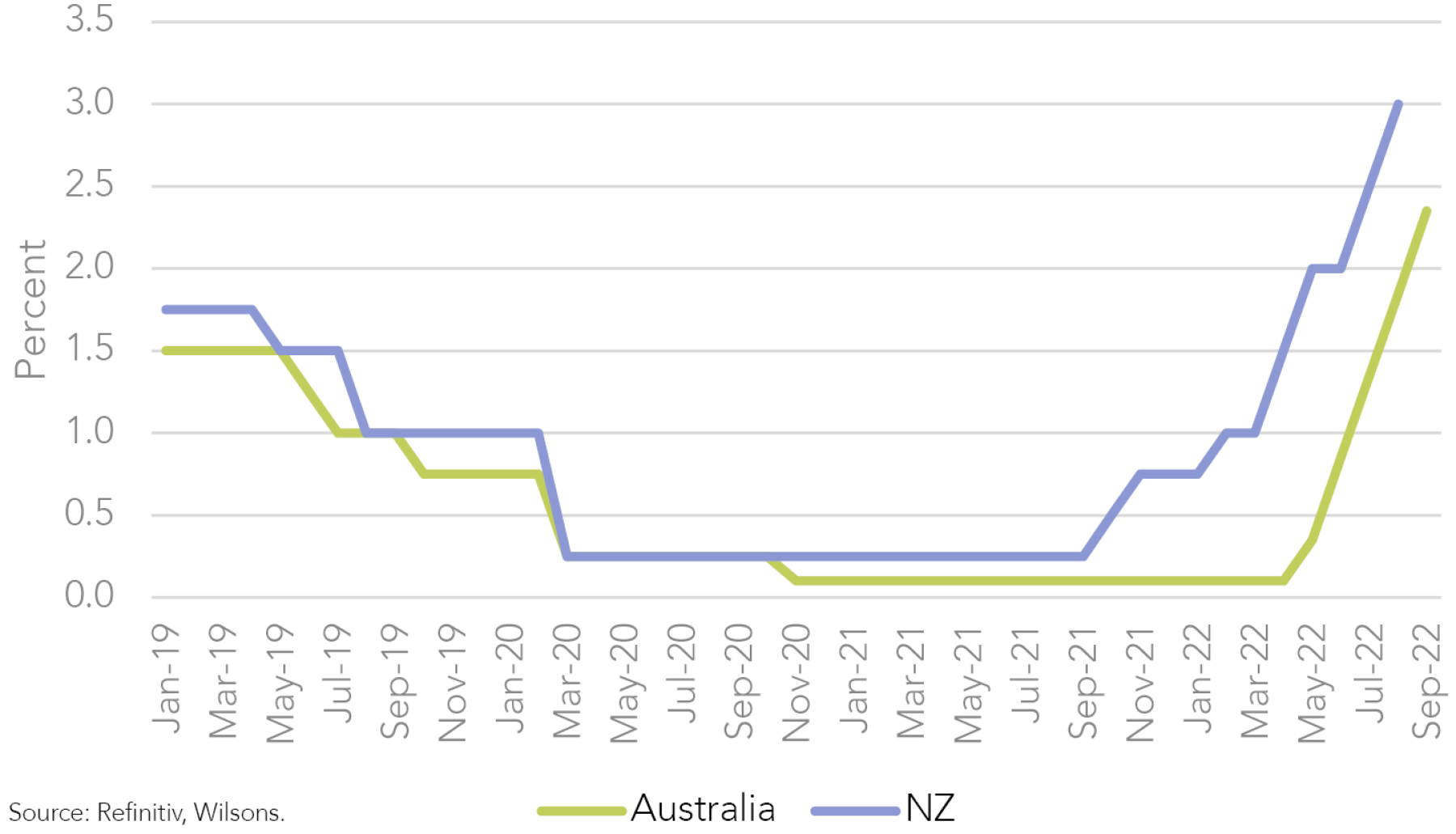
Australia Positioned to Learn from RBNZ’s Moves
The NZ economy has shown resilience considering the 50 basis point (bp) hike at the most recent August meeting marked the 7th hike in the tightening cycle and the 4th “at pace” 50bp hike in a row, for a cumulative 275bps of interest rate increases. However, recent activity data has started to show some cracks, as the effects of higher interest rates and rising costs have extended beyond sentiment surveys into softer readings across real economic sectors, mainly housing, consumer spending and labour market data.
The real test will be whether the RBNZ sticks to its hawkish rhetoric even as economic momentum slows through the end of this year (as is widely expected) and delivers on its base case to get the official cash rate (OCR) to 4% by year end. As is the case with many central banks, the RBNZ’s ongoing hawkish tone seemingly stems from a perceived need to avoid the risk that markets water down the transmission and effectiveness of their moves. The market is currently pricing in a total of 90bps through to year end, falling just short of the bank’s forecast path. Conversely, the RBA continues to emphasize its flexibility by making it quite clear it is not on a pre-set path. Nonetheless, the market has priced a steep increase of a further 85bps into year end, increasing pressure on the RBA to expedite its hiking cycle.
This approach from the RBA may serve them well, as they have the luxury of seeing how the full effect of interest rate hikes plays out in other economies.
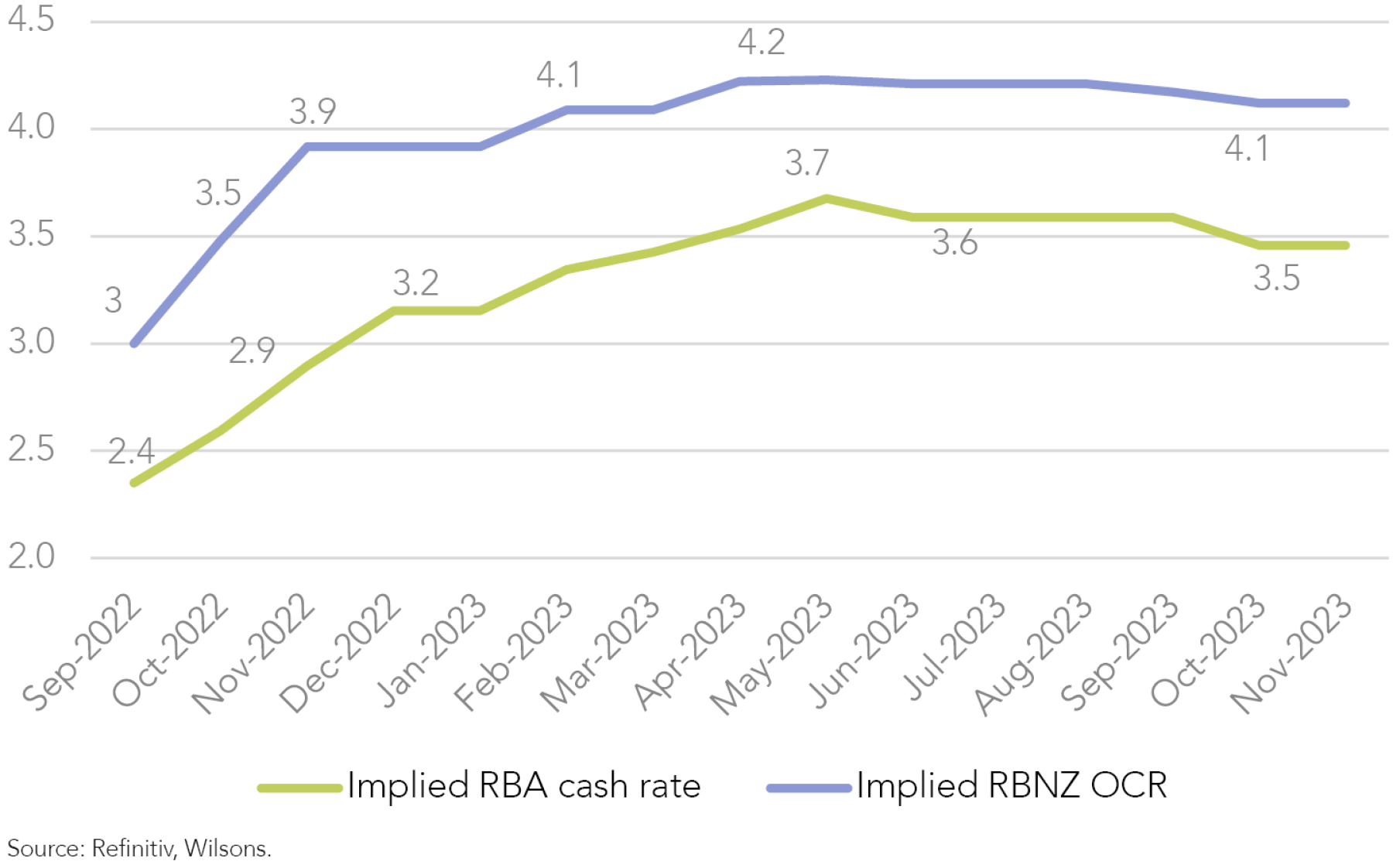
Sentiment data was quick to react at the onset of hikes. NZ consumer confidence collapsed early in the year, and is currently sitting at record lows, while business activity indicators also tumbled. Despite weak surveyed confidence, real activity data was holding up quite well and the economy looked sufficiently sound to handle further hikes. Meanwhile, the Australian economy continues to demonstrate underlying momentum. At last week’s June quarter GDP release, the economy grew 3.6% YoY while more timely indicators of economic conditions (NAB Business survey) suggest growth is continuing at an above-trend pace.
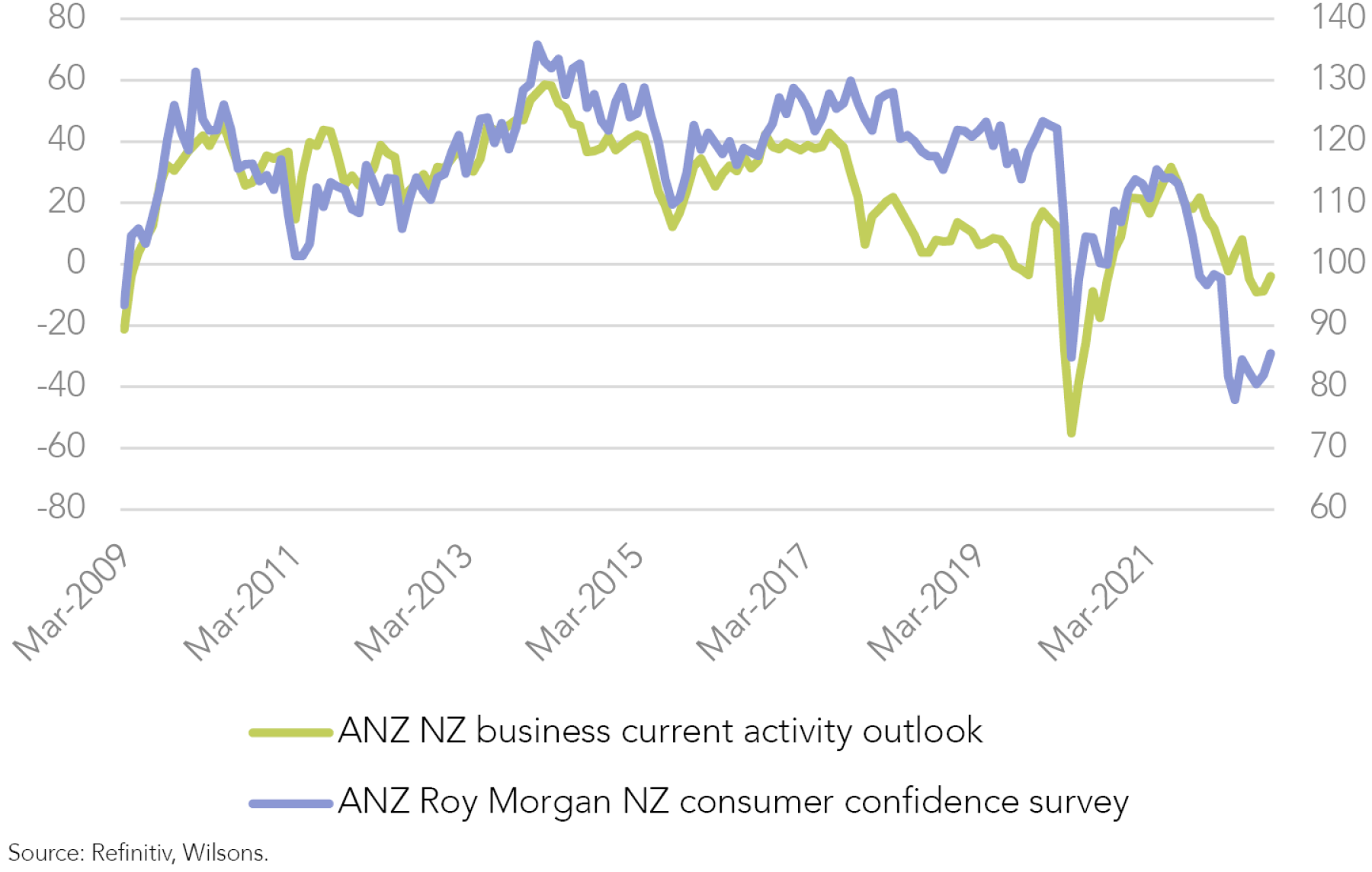
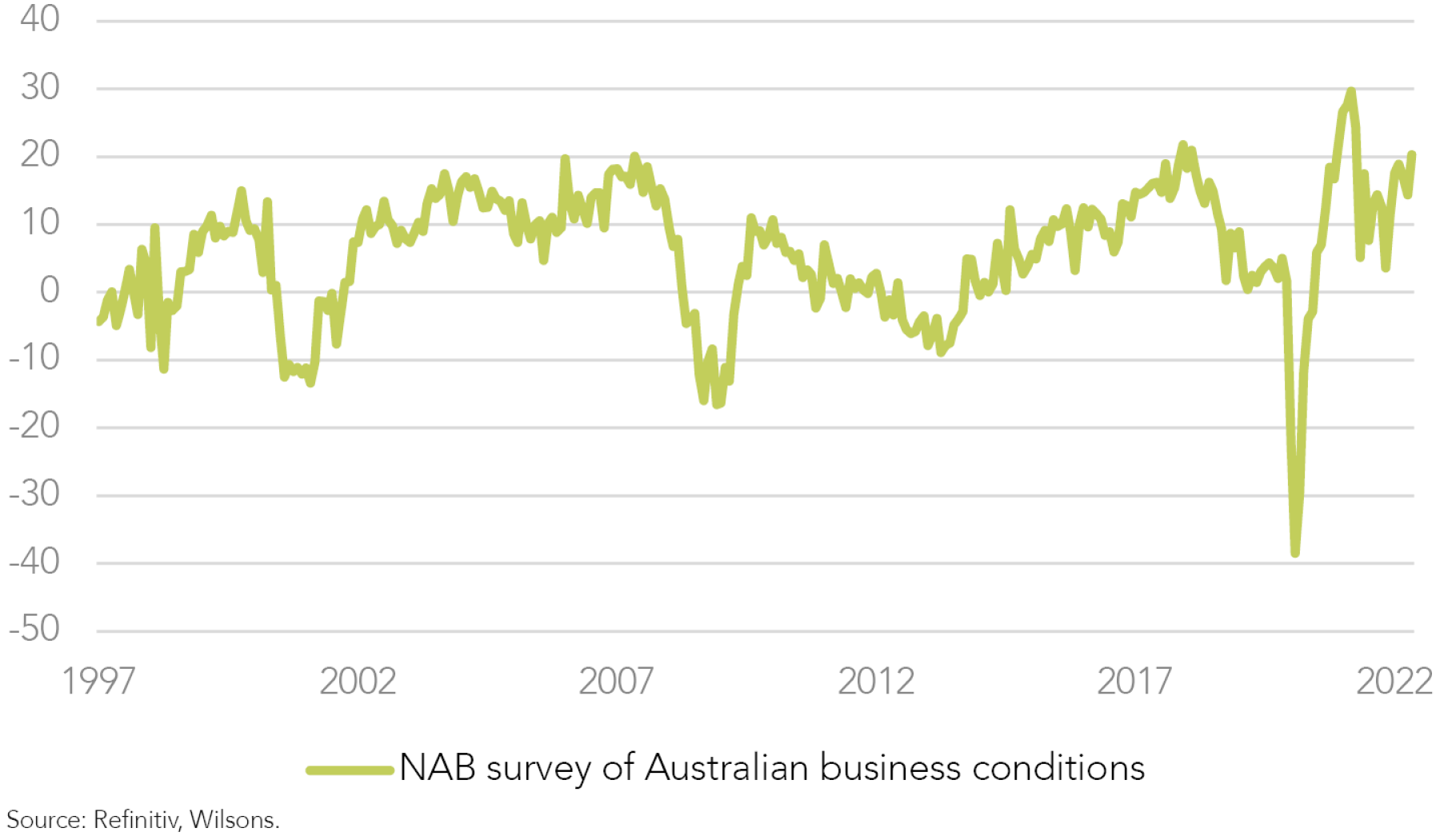

NZ’s Housing Market: The Real Canary?
Nine months and 275bps on from the RBNZ’s early hawkishness, there are signs the rapid fire rate rises are having a real effect on key sectors. NZ employment growth was essentially flat in the last 6 months, while Q2 retail data saw real sales fall by 2.3%, much weaker than the rise of 1.7% expected by the market. But perhaps most revealingly, a significant downturn in the housing market is taking hold, with house prices down 9% from their peak in November 2021.
Household budgets are being squeezed by the combination of higher prices and higher interest rates. The risk here is the economy could slow more sharply than expected, since the full effects of the RBNZ’s tightening to date have yet to be felt, with a significant number of households and businesses due to refix their mortgages at much higher rates over the coming months or face further increases in floating rates.
The fixed rate nature of the New Zealand mortgage market may mean the lag between monetary policy tightening and impact on the consumer is longer in New Zealand than in Australia, where the mortgage market is still predominantly variable rate.

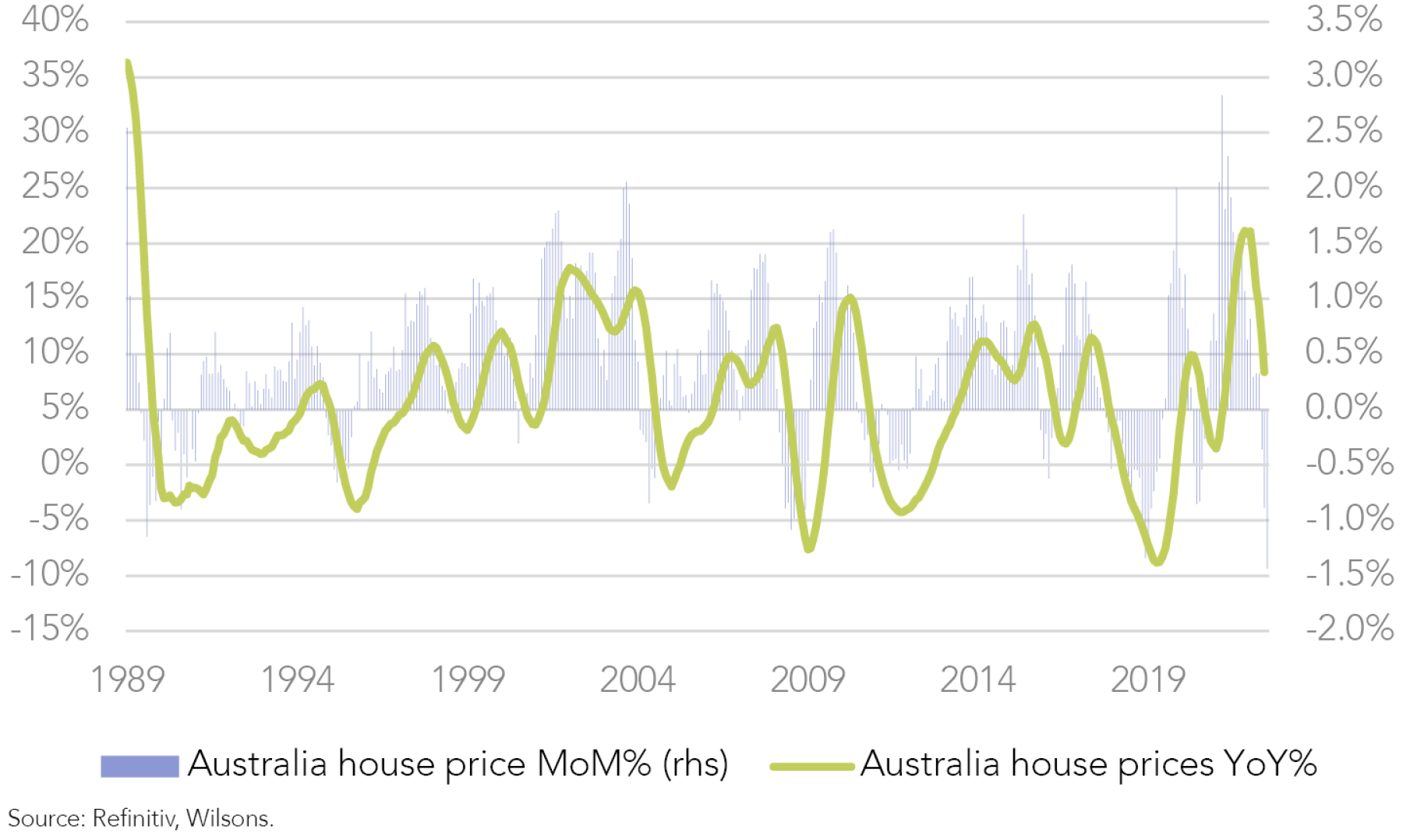
With more than 80% of the NZ mortgage market fixed for less than 2 years, the chance for further demand destruction remains a key risk. The RBNZ expects the decline in house prices to reach 12% in Q1 2023. Lower asset prices will not detract from a hawkish monetary policy trajectory, and are increasingly viewed by the reserve bank as a necessary outcome rather than a constraint.
However, as the end of the tightening cycle draws closer, the speed at which shorter term wholesale rates are rising has moderated. This means there is a potential end in sight in the climb of mortgage rates.

Spending Is Key
As evidenced by the latest retail sales data, spending is already coming under pressure. To start with, current wage growth is not keeping pace with inflation, and rising mortgage rates are further eroding spending, as discussed above. The combination of these factors, in tandem with the negative wealth effect of falling asset prices (particularly housing), means discretionary spending should take the biggest hit. The much weaker than expected Q2 retail sales print appears to be signalling that the long – and in some ways perverse – spending boom over the last couple of years is losing steam.
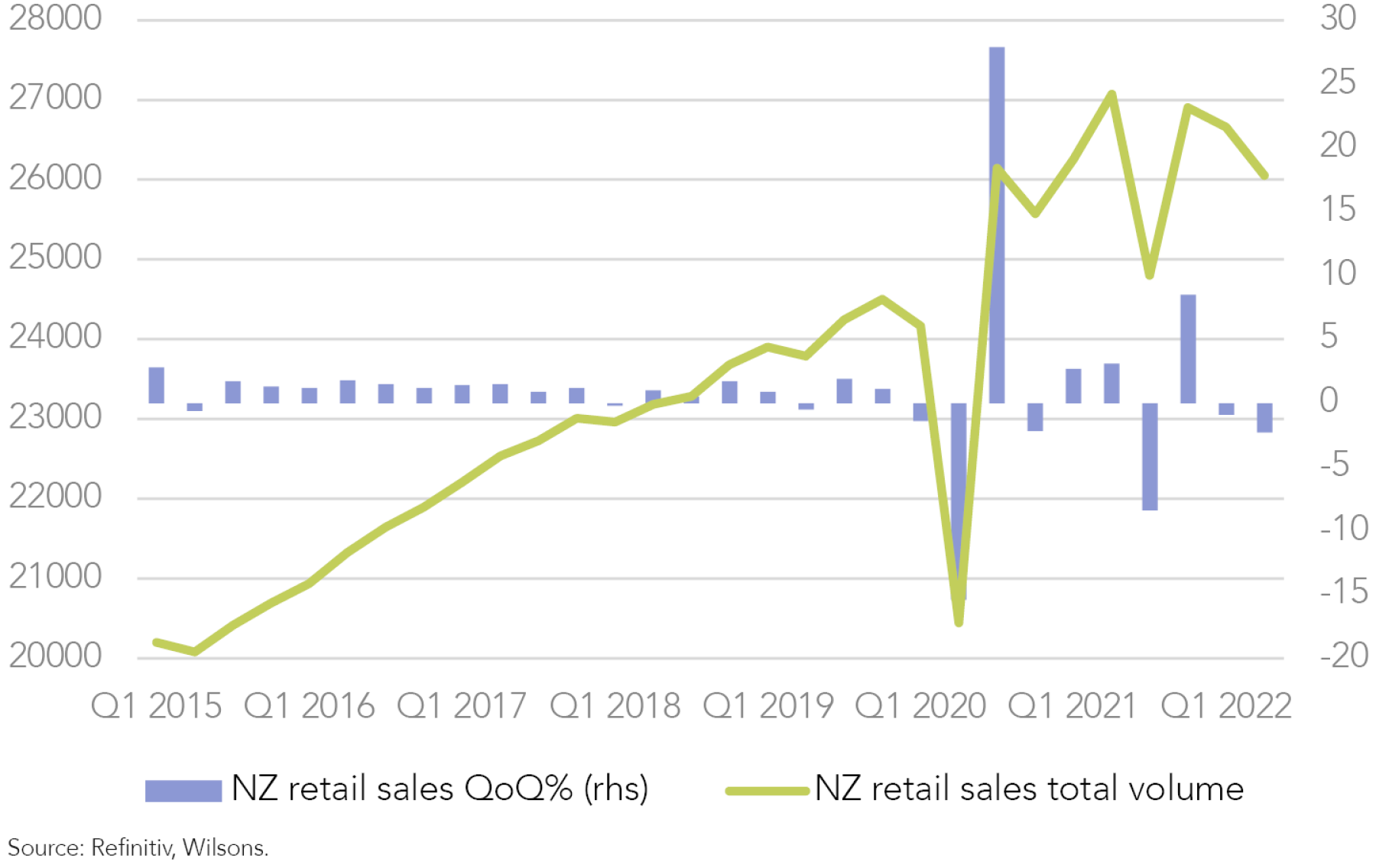
One area of support for the household sector is the significant amount of excess savings (approximately 7% of GDP), which will provide a buffer as spending normalises.
In the most explicit and hawkish terms, the RBNZ has flagged that the only way to rein in inflationary pressures is to curtail spending. Household consumption makes up around 60% of NZ GDP by expenditure. Moreover, listed companies with a direct exposure to the NZ consumer represent ~60% of the NZX50.
Ultimately, how households respond to tightening financial conditions is central to the reserve bank achieving its inflation and labour market targets, as well as a major determining factor of the strength of company earnings.
RBNZ Focused on Inflation
Despite weaker activity indicators, the RBNZ’s primary focus is inflation. The RBNZ said it will continue to “briskly” raise the OCR until it is confident inflation will return to its 1-3% target range. It is focused on ensuring that inflation expectations do not become “unanchored” and drift further away from the 2% target midpoint, which would ultimately require a larger tightening cycle to bring them back in line.
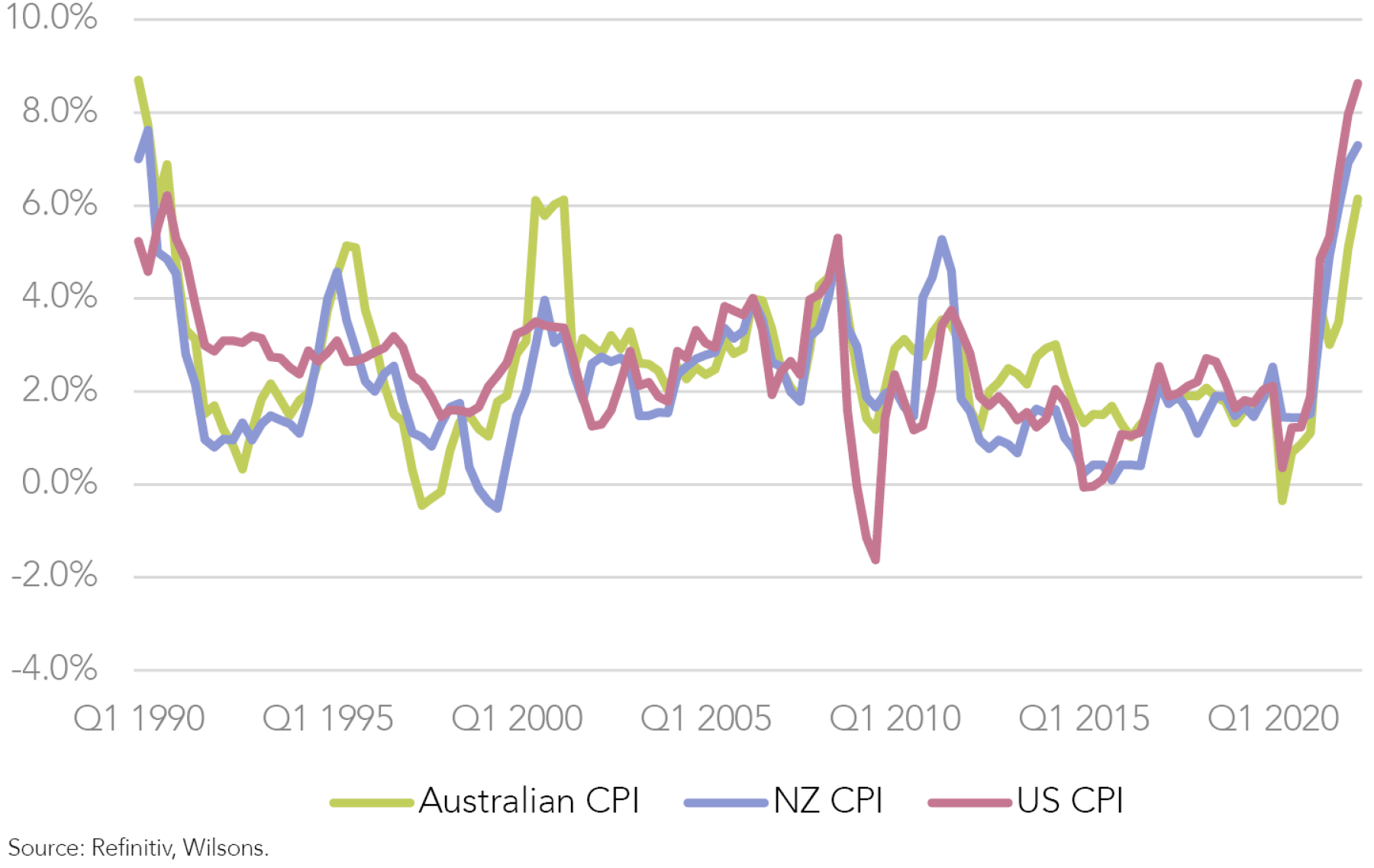
In our view, only if inflation eases convincingly and there is overwhelming evidence of hard-data softening will the RBNZ cease its “at pace” 50bp hikes and lift the OCR by 25bps, or even stay on hold in its two remaining meetings of the year.
The RBNZ was an early starter in the tightening cycle, moving 8 months ahead of the RBA. How key NZ economic data evolves in coming months could be a lead indicator for what is to come in Australia and whether the economy is in fact well placed to absorb further interest rate increases.
The more cautious approach from the RBA may serve them well. With its latest rate rise, the reserve bank now has monetary policy close to a neutral setting, which means it can move more carefully with further rate rises, as it evaluates how the domestic economy responds to higher interest rates and how growth evolves in economies which took a more aggressive approach, such as New Zealand.

Written by
David Cassidy, Head of Investment Strategy
David is one of Australia’s leading investment strategists.
About Wilsons Advisory: Wilsons Advisory is a financial advisory firm focused on delivering strategic and investment advice for people with ambition – whether they be a private investor, corporate, fund manager or global institution. Its client-first, whole of firm approach allows Wilsons Advisory to partner with clients for the long-term and provide the wide range of financial and advisory services they may require throughout their financial future. Wilsons Advisory is staff-owned and has offices across Australia.
Disclaimer: This communication has been prepared by Wilsons Advisory and Stockbroking Limited (ACN 010 529 665; AFSL 238375) and/or Wilsons Corporate Finance Limited (ACN 057 547 323; AFSL 238383) (collectively “Wilsons Advisory”). It is being supplied to you solely for your information and no action should be taken on the basis of or in reliance on this communication. To the extent that any information prepared by Wilsons Advisory contains a financial product advice, it is general advice only and has been prepared by Wilsons Advisory without reference to your objectives, financial situation or needs. You should consider the appropriateness of the advice in light of your own objectives, financial situation and needs before following or relying on the advice. You should also obtain a copy of, and consider, any relevant disclosure document before making any decision to acquire or dispose of a financial product. Wilsons Advisory's Financial Services Guide is available at wilsonsadvisory.com.au/disclosures.
All investments carry risk. Different investment strategies can carry different levels of risk, depending on the assets that make up that strategy. The value of investments and the level of returns will vary. Future returns may differ from past returns and past performance is not a reliable guide to future performance. On that basis, any advice should not be relied on to make any investment decisions without first consulting with your financial adviser. If you do not currently have an adviser, please contact us and we would be happy to connect you with a Wilsons Advisory representative.
To the extent that any specific documents or products are referred to, please also ensure that you obtain the relevant disclosure documents such as Product Disclosure Statement(s), Prospectus(es) and Investment Program(s) before considering any related investments.
Wilsons Advisory and their associates may have received and may continue to receive fees from any company or companies referred to in this communication (the “Companies”) in relation to corporate advisory, underwriting or other professional investment services. Please see relevant Wilsons Advisory disclosures at www.wilsonsadvisory.com.au/disclosures.
